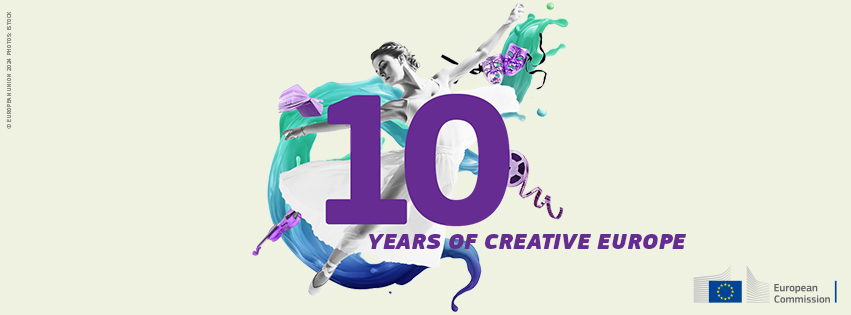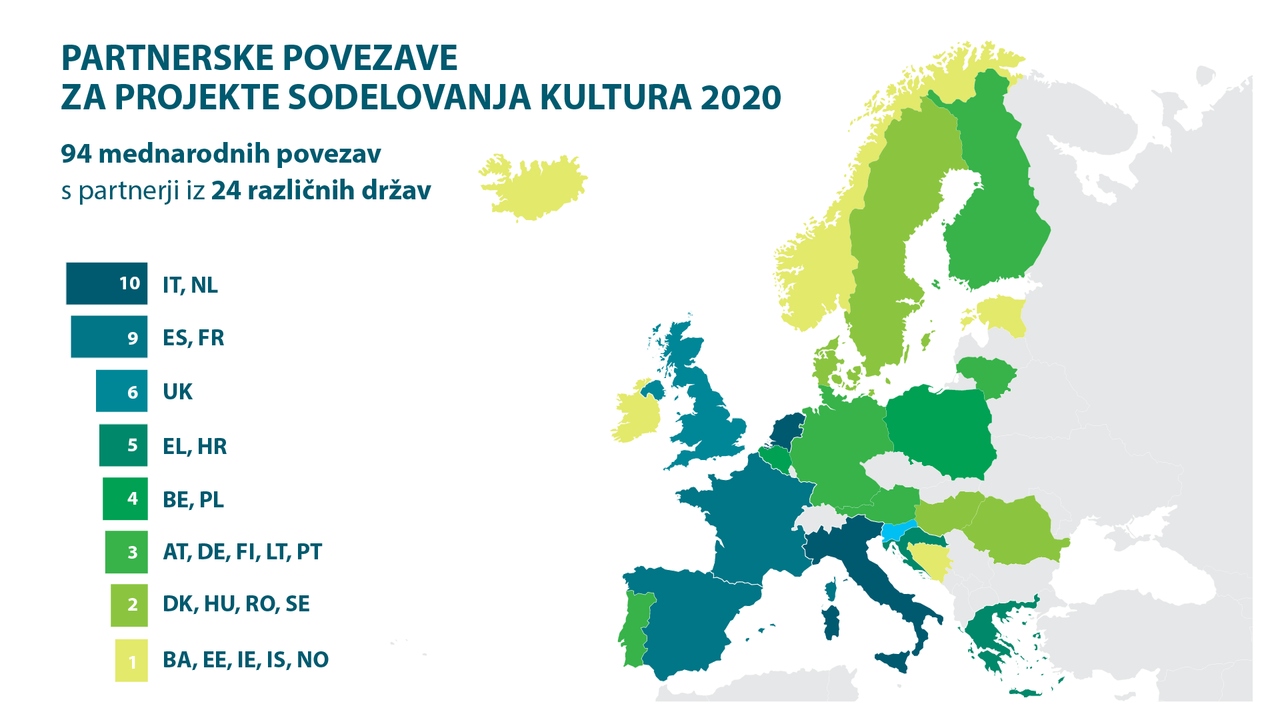Creative Europe in Slovenia
Creative Europe 2024: Slovenia’s Imprint on the European Cultural Space
Slovenian organisations are once again among the top performers in Creative Europe! Discover the 2024 results in a report prepared by the Motovila Institute.
The First Decade of the EU Creative Europe Programme
How successful have Slovenian organisations been in the first 10 years of the Creative Europe programme? A brief overview reveals remarkable results!
Mateja Lazar, a specialist in the field of international cultural cooperation at Motovila Institute and head of the CED Slovenia, looks at Slovenian success in all strands of the Creative Europe programme – Culture, MEDIA and Cross-sectoral strand.

Creative Slovenia up to 2020: A Fascinating Feat
Slovenian cultural producers consistently perform well on calls for tender issued by the EU's funding programmes. Find out which organisations utilise these funding sources in their programmes and what kind of projects they carry out.

Slovenian Organisations in European Platforms
- Versopolis - Where Poetry Lives (Beletrina Publishing Institute, leader)
- LINA - Learn, Interact and Network in Architecture (Faculty of Architecture, University of Ljubljana, leader)
- Aerowaves (En-Knap Productions, member)
- Culture and Health (Asociacija, member)
- Craftwork 4.0 All - European Emerging Craft Platform (Center Rog, member)
- Liveurope (Kino Šiška Centre for Urban Culture, member)
- UPBEAT (Kino Šiška Centre for Urban Culture, member)
- CELA - Connecting Emerging Literary Artists (Goga Publishing House, member, and Beletrina Publishing Institute, member)
- Exchange (SIGIC, member)
See also
- Creative Europe Desk Slovenia
- Motovila Institute
- A list of ALL Slovene organisations funded by the Culture and MEDIA Programmes 2000-2020
Read also
- Mateja Lazar, Nika Mušič and Sabina Briški Karlić: Creative Europe 2024. Slovenia’s Imprint on the European Cultural Space (2025)
- Mateja Lazar and Tanja Kos: Reinventing_International_Mobility (2021)
- Mateja Lazar: Creative Slovenia up to 2020, a fascinating feat (2020)
- Sabina Briški Karlić: Audiovisual Training and Networking (2020)
External links
- CED Slovenia website
- Kino Otok Young4Film - Young Programmers for Young Audiences! European Film Festival Network
- Central and Eastern European Animation website
- LINA website
- Versopolis website
- Aerowaves website
- Culture and Health website
- Craftwork 4.0 All website
- Liveurope website
- UPBEAT website
- CELA website
- Exchange website